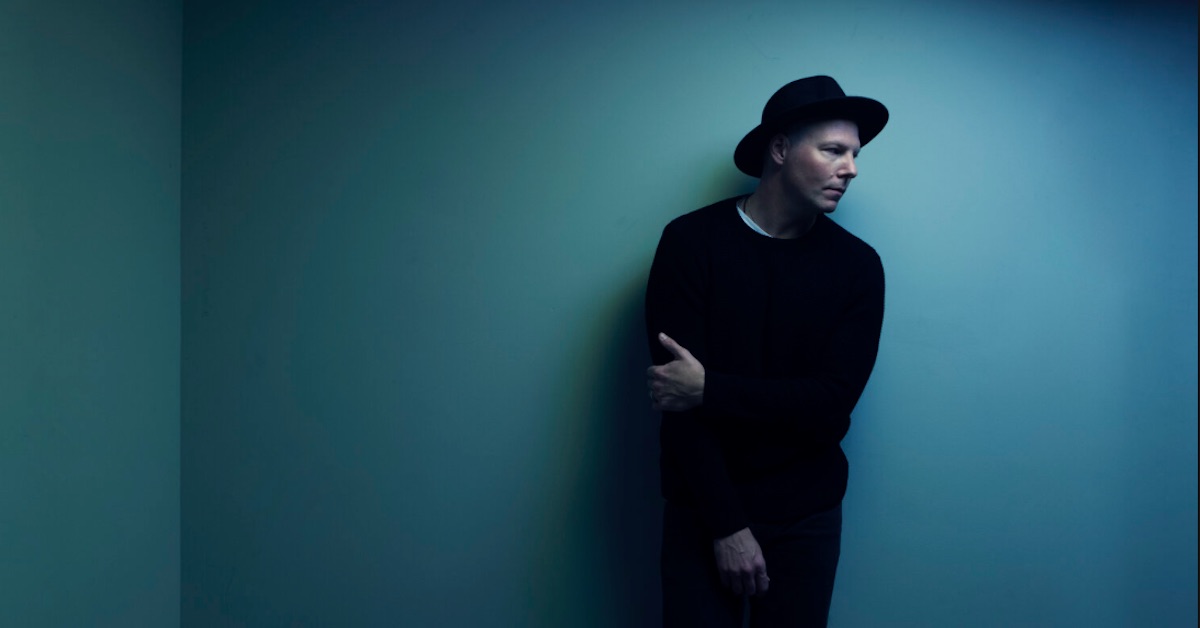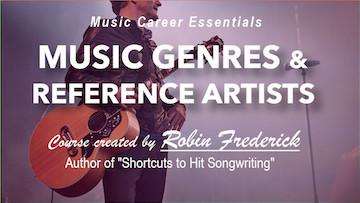Recently three different songwriters have mentioned the name Zayde Wolf to me. Now, I am a true believer in the “Rule of Three,” and therefore I made sure to check him out. (Ron Fair, former president of A&M records and a top A&R exec, once told me that if three people — any three people — told him about a band or artist, he would be certain to take a look at them.)
So, I spent some time listening to Zayde Wolf and reading his bio, and I’m glad I did. Here’s a guy who has very rapidly garnered hundreds of Film, TV, Advertising, Trailer, and Video Game placements. Naturally, I began to wonder: Who is he? Where did he come from? How many years of dues-paying has he put in? Turns out none of these questions really apply.
Zayde Wolf is the invention of Dustin Burnett, a Nashville-based producer, songwriter, and musician. (There’s a lot more than Country music going on in Nashville these days.) He’s put in plenty of years of dues-paying in bands as a musician.
But Zayde Wolf has no history. He’s a character created by Burnett for a purpose: to be used in songs that work for Film & TV scenes, video games, and sports events that call for a powerhouse chorus and a lyric based on themes of strength, conflict, and standing up for oneself.
Because all of Zayde Wolf’s songs share similarities, I picked a couple that are representative of most. Visit Spotify to hear more and you’ll see what I mean about similarities.
“Heroes” and “Next Level” – Zayde Wolf
Songwriter: Dustin Brian Burnett (aka Zayde Wolf)
TECHNIQUES TO HEAR AND TRY:
- Find themes and characters that work for a use.
- Write lyrics that reach listeners no matter what.
- Underscore your lyric with a melody that drives it home.
“HEROES” – Zayde Wolf
“NEXT LEVEL” – Zayde Wolf
GENRE: Rock, Pop/Rock
(What is a genre? Watch this video.)
These songs have lots of Rock swagger, plenty of guitar distortion, and defiant lyrics, but they stop short of the full-throated, planet-colliding sound of Mainstream Rock songs by, say, Disturbed or Shinedown. Instead, Wolf’s songs feature a catchy chorus melody and lyrics that evoke the empowerment songs of Pop, so I’ve included the Pop/Rock genre in addition to Rock. The vocals especially seem to fall more into the Pop/Rock vein rather than the angry growl of Mainstream Rock. This could be a big plus in the film & TV market which tends to shy away from the more aggressive Hard Rock genre.
The use
Wolf created these songs for a use: a team of players running out on the field, a victory lap by the winner of a reality TV competition, or video game combat. They’re big anthemic odes to struggle and victory. Each one created with this purpose in mind.
You might not want to listen to an entire album of this type of song but they’re not meant to be part of an album. Each song is intended to enhance a viewer’s or video game player’s experience and make it more memorable. For that, they work great!
TIP: Music libraries love this type of song. It’s well recorded. The singer is believable. The song puts across a single emotion. And, best of all, they know exactly where to pitch it. Think about the ways that Film & TV scenes, commercials, video games, reality TV, sports, and even business trade shows use songs. Then tailor yours to fit some of these uses.
LYRICS
Make your song title work for you
Check out some of Zayde’s song titles. They practically shout bold, audacious, confident, ready to take on the world: “Heroes,” “Walk Through the Fire,” “Born Ready,” “Rule the World,” “King,” “Gladiator,” “Next Level,” “Champion.”
The energy and theme of the song is clearly expressed right there in the title. A music supervisor will know immediately what kind of scene these songs are likely to work with. Even if a supervisor isn’t currently looking for a song with this theme, you can bet they’ll hang onto it until the right opportunity comes along. It’s a no-brainer.
TIP: Give your song a title that tells the music supervisor something about the emotional tone or the type of scene your song could be used in and they’ll thank you.
The “Cliff Notes” version of your song
In each of these songs, the verse focuses on a problem or a repressive situation, then the big chorus releases the tension in a triumphant statement. Here are the opening lines of the first verse and chorus of “Heroes.”
VERSE: I can hear the lost crying / I can hear the truth hiding.
CHORUS: We are heroes, heroes in the darkest times.
Here’s what he does in “Next Level.”
VERSE: I’ve some blood on my knees / I’ve got this pain on a leash.
CHORUS: Im gonna keep on reaching for the next level.
If a music supervisor or TV viewer only heard these two lines, they’d know what the song was about. It’s a great way to ensure your audience gets the gist of your song without having to hear every word of it..
TIP: Check the first line of your verses and the first and last line of your chorus. They’ll be more effective if they can stand alone and still convey the situation or emotion.
Here’s why that’s important: Your song might be playing under sound effects, dialogue, voice-over, or intense action onscreen. Viewers are involved in what’s going on. They’re bound to miss a lot of your lyric. The Cliff Notes version will get them up to speed. And there’s another way ensure your song connects emotionally.
Some words are more useful than others
The lyric of “Next Level” is filled with words and phrases that evoke a reaction in the listener: “blood,” “pain,” “holding tight,” “rise,” “beast.” These are words with a lot of emotional and physical associations, mostly negative and threatening. If any of those words or phrases get through, the listener will feel the song’s message — there’s a threat, a danger, a matter of life or death — even if they don’t hear the entire lyric word for word.
Now look at the lyric of “Heroes” and you’ll see the same idea at work: words with a lot of associations convey the emotional gist of the lyric (Verse 1: “lost crying,” “hiding,” “shadows,” “fear,” “burning.”) Then there’s a chorus that rises to the challenge and releases the darkness with “We are heroes” repeated three times. On some level, no matter how distracted, listeners willunderstand or feel what the song is saying.
-Try It Now –
When your song is used under a scene with dialogue, under voice-over, or buried under sound effects, give the viewer a chance to get the message in spite of all that. Use words that have a lot of associations and emotional baggage and viewers will respond to your message. Write down a few ideas for lyric lines that make use of words that have associated feelings, images, and ideas.
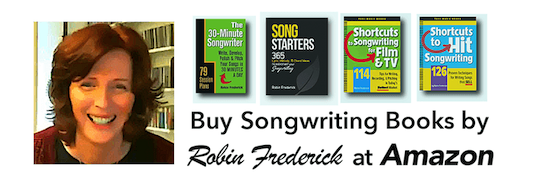
MELODY
Keep your work fresh
Most of Zade Wolf’s melodies start in a low, conversational range then move upward through a pre-chorus to the highest notes in the chorus. You can hear that melody technique in both of these songs because the theme of overcoming obstacles demands a triumphant, powerful chorus and there’s nothing like a rising melody line to make listeners feel like Rocky Balboa in his big comeback scene.
“Heroes” is a song from 2016 while “Next Level” is a more recent release from 2018. In between, this songwriter has written at least 34 songs as the Zayde Wolfe character, pretty much all with the same theme. Writing in quantity like this is a successful strategy in the music library business. But how do you keep from repeating yourself and stay engaged in your work?
If you compare these two melodies, you can hear how the writer is evolving his style in order to keep his songs fresh. “Next Level” is a more rhythmically complex melody, with syncopation, changes in the melodic rhythm on the pre-chorus, and a strong, punchy hook (“Let’s get to work.”)
TIP: If you’re writing a lot of material for music libraries, survival strategies like this are essential. In this case, it’s “Keep listening to new music. Keep learning. Evolve.”
Think of your melody as underscore for your lyric
In both songs, the melody supports the contrast between the dark verse lyric and exultant chorus. Verses are in a low, conversational note range with a relatively small amount of movement, while the chorus leaps up in range and often features more notes on strong beats and more soaring melodic motion.
-Try It Now –
Be sure your melody supports what your lyric is saying. A quirky, fun lyric with a few offbeat words would be well matched with a syncopated melody that has some surprising leaps and twists. Your melody speaks to listeners as much as your lyric does. Take a look at some of your songs to see if you can increase the support your melody is giving your lyric.
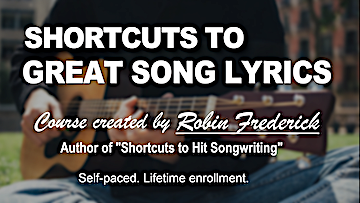
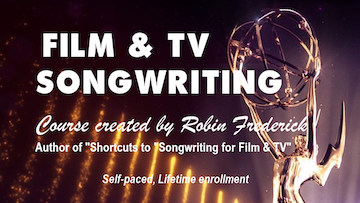
PRODUCTION
The production is right on target for this Rock style. There’s plenty of growly low end when it’s needed, and some great drum and percussion programming. “Next Level” is particularly strong with a complex but always steady-on rhythm track.
One of the great challenges of working in a home studio is making your track sound like a bunch of really good musicians showed up in your bedroom, really listened to each other as they played, and did a killer take of your song.
Home studios with a single musician/engineer can sometimes overlook the importance of the feel that comes from the communal interaction between a group of musicians. The tracks can end up sounding too antiseptic, disconnected from each other.
– Try It Now –
When recording in genres that are dominated by bands or combos, be sure to play each track as if you’re in a live situation. Listen to the other tracks and work off them. Adjust your headphone mix as you record to emphasize the track you need to hear.
READ MORE HIT SONG GUIDES ON THIS SITE and learn from the hits!
